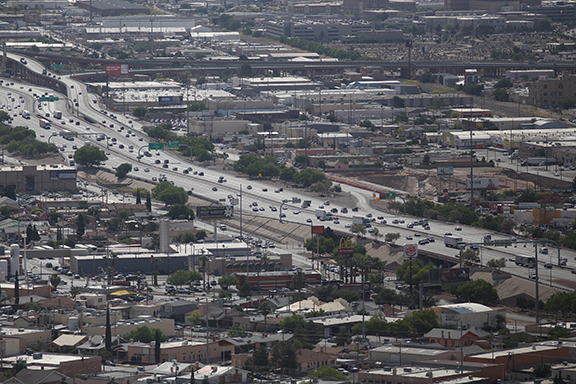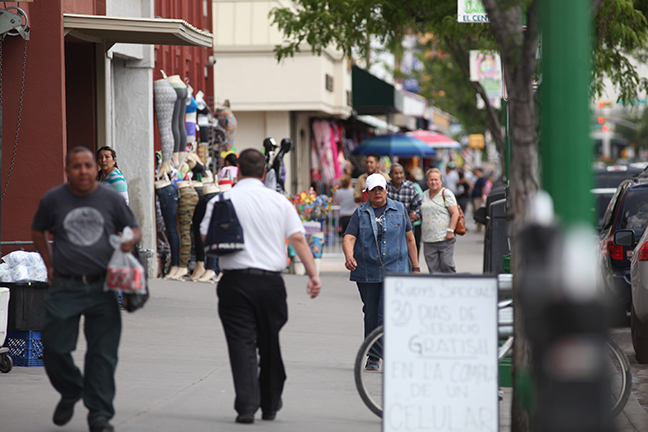El Paso County is in the midst of its slowest population growth rate in 80 years, driven largely by a flight of residents to other U.S. communities from the Texas border county, new estimates from the U.S. Census Bureau show.
The county’s population in 2018 was an estimated 840,758, up from just over 800,000 at the time of the 2010 census. That means El Paso County has had an average annual population growth rate of 0.5% since the last census, compared to 0.6% nationally and 1.5% in Texas.
The 0.5% annual population growth since the 2010 census is the slowest rate of growth since the period between 1930 and 1940, during the Great Depression, when El Paso County lost population at a rate of about 0.6% a year.
El Paso’s annual growth rate between 2000 and 2010 was 1.4%, almost three times the current growth rate. The county’s peak growth rates in the 20th century were 9.5% annually between 1900 and 1910, and 7.8% annually between 1950 and 1960.
The census estimates show that El Paso’s natural population growth, the difference between births and deaths, added 68,519 people to the population since the last census. Net international migration – the difference between people moving to El Paso from another country and those moving out of El Paso to another country – added 21,616 people to the population. But net domestic migration – the difference between the numbers of people moving to El Paso from other U.S. communities and those moving from El Paso to other U.S. communities – produced a net loss of 50,317 people since April 2010, according the census estimates.
That domestic migration number indicates that El Paso County has lost 6.3% of its population in the movement between U.S. communities since 2010. That is the largest loss among the 10 Texas counties that are on the list of the nation’s largest 100 most populous counties. Only 14 other counties among the 100 most populous nations lost a higher percentage of population in domestic migration, analysis of census data shows. Most of those counties were concentrated in high cost of living areas like the New York City metro area and struggling manufacturing hubs in the Midwest.
Honolulu was the only county west of the Mississippi River with a higher percentage loss in domestic migration than El Paso County.

In El Paso, net domestic migration – the difference between the numbers of people moving to El Paso from other U.S. communities and those moving from El Paso to other U.S. communities – produced a net loss of 50,317 people since April 2010, according the census estimates. File photo by Jorge Salgado, Borderzine.com
Domestic migration is most commonly drive by economics. People move from one community to another in search of better-paying jobs or a better cost of living.
The average weekly wage in El Paso in September 2018, the most recent data available from the U.S. Bureau of Labor Statistics, was $735. That compares to an average weekly wage of $1,064 in Texas and $1,055 in the United States. That means the average weekly wage in El Paso was 69% of the state average and 70% of the national average.
El Paso has long had net losses in domestic migration, with the phenomenon sometimes being referred to as a “brain drain.” Two main factors are likely drivers – people with less than a college education seeking higher wages in blue-collar industries such as oil and gas extraction and refining, and people with college degrees seeking jobs or higher wages outside El Paso.
For example, UTEP produces more Hispanics with doctoral degrees in engineering than any other U.S. university. It ranks fifth in awarding bachelor’s degrees in engineering to Hispanics. But UTEP President Diana Natalicio and other leaders have long said that most of those engineering graduates have to leave El Paso to find jobs.
Robert Moore is a veteran El Paso journalist who has covered population trends for more than 30 years.


